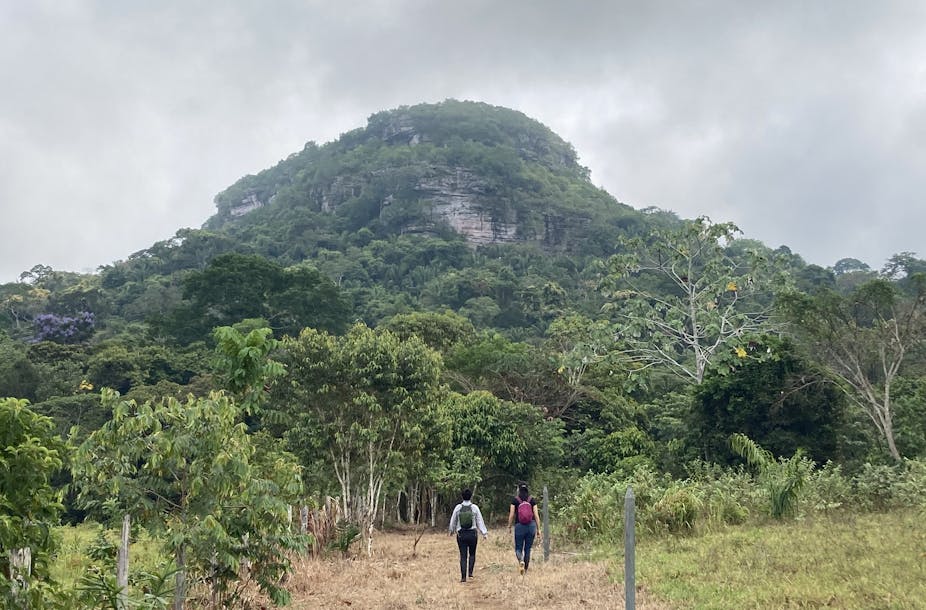Colombia’s Chiribiquete National Natural Park is a natural, historical and cultural wonder. Located in the northwestern part of the Colombian Amazon, it covers 43,000 square kilometres and contains what are probably some of the most ancient traces of human occupation in the Americas, with tens of thousands of pictographs in more than 50 rock shelters. The park also contributes significantly to climate regulation in the region, and so forms an important part of the Amazon ecological system. In addition, there are clues of the presence of isolated indigenous groups, whose protection is a national and international obligation.
In recognition of Chiribiquete’s inestimable environmental and cultural value, in 2018 the park was inscribed in the Unesco World Heritage List. To protect the site and the peoples who live there, it has been closed to visitors since 1989. The Parques Nacionales Naturales de Colombia (PNNC), manager of the site along with Colombian Institute of Anthropology and History (ICANH), has urged that the Chiribiquete be kept closed to tourism.
While tourists are not allowed to visit Chiribiquete itself, communicating the site’s importance is essential. Since the park’s closure, those wishing to visit have been reoriented to the buffer zone known as Serranía de la Lindosa, located on its northern side. It contains many of the park’s recognizable natural and cultural features, such as flat-topped mountains known as Tepuyes, and many large and well-preserved rock art panels that may date back to more than 12,000 years ago.
To develop responsible tourism while protecting the site’s archaeological heritage, the Colombian Institute of Anthropology and History (ICANH) has been working closely with the local communities of the Serranía de la Lindosa for the last six years. The goal is to develop and maintain an efficient management strategy for the park.
From conflict to cooperation
Until the 1970s, Colombia’s government considered the area to be “uncivilized”, and so promoted the settlement by people from other regions. Those who came raised families and live by farming and ranching, known to be a cause of environmental degradation. In the 1990s, illegal armed groups became active in the region and established drug-trafficking networks, creating uncertainty and turmoil. The 2016 peace agreement between Colombia’s national government and the FARC guerrilla organisation was a significant step forward, and enabled local communities to turn toward a more hopeful future.
While local communities had long been aware of Chiribiquete’s archaeological treasures, the peace agreement highlighted the importance of protecting them. It also opened up economic opportunities related to the protection of natural and cultural heritage rather than the old extractive models based on deforestation and livestock. Even before the agreement’s signature, area residents began to offer services in the Serranía de la Lindosa, including tourist guidance, transportation, and catering services. While still an “off the beaten path” destination, the area has a growing presence on the international tourist circuit.

The park’s 2018 inscription as a World Heritage Site not only brought international recognition of park’s importance, it also supported efforts by local communities to preserve and promote the site. Institutions such as the ICANH are also pitching in and work has included an analysis of the carrying capacity of the archaeological sites, the installation of the controlled pathways through sensitive areas, and the formulation of the tourist regulation plan. Projects to conserve the rock-art panels are also in progress, including museum exhibitions, books and other publications. International cooperation agencies such as the US Ambassadors Fund for Cultural Preservation have also become involved.
Today, the Serranía de la Lindosa is a national example of resilience, and of how local communities decided to change their way of life for the better. New generations of young people are working to transition to a more sustainable way of life consistent with the protection of the cultural and natural heritage. Together, it’s a remarkable example of how cultural World Heritage can benefit local communities, improve people’s welfare, and encourage the protection of humankind and its collective heritage.
The authors would like to acknowledge the assistance of the Instituto Colombiano de Antropología e Historia, the Parques Nacionales Naturales de Colombia, and the local communities of Serranía de la Lindosa who inspired this article and make possible the protection of the World Heritage Site.

50th anniversary of the World Heritage Convention (16 November 2022): World Heritage as a source of resilience, humanity and innovation.

